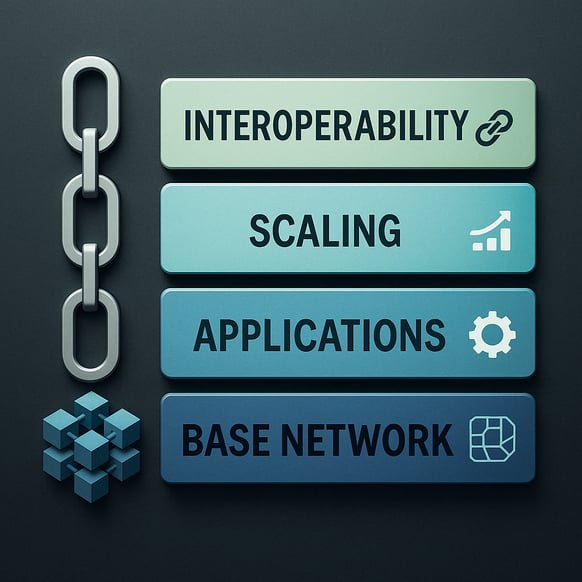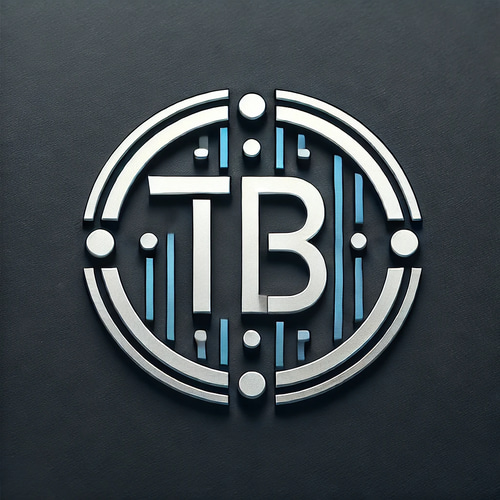Blockchain Layers Explained: Layer 1 vs. Layer 2 (And Beyond)
Learn how blockchain layers like Layer 1, Layer 2, and beyond work. Discover how these Blockchain Layers improve speed, security, and scalability in crypto.
5/21/20252 min read


Why Blockchain Layers Matter
Crypto adoption continues to grow, but networks like Bitcoin and Ethereum face speed, cost, and scalability issues. Blockchain layers are the solution—think of them as a skyscraper's levels, each solving unique challenges. Let's break down Layers 1–4!
Layer 1: The Base Blockchain 🧱
Layer 1 is the foundational layer of a blockchain network. It handles:
Consensus (how the network agrees on data)
Security (keeping the network safe)
Transaction validation (recording the movement of assets)
Examples of Layer 1 blockchains:
Bitcoin – Prioritizes security and decentralization but has slower speeds.
Ethereum – Supports smart contracts but suffers from high gas fees.
Solana, Litecoin, Cardano – Other base-layer blockchains with unique consensus models.
Limitations:
Slower speeds due to decentralized validation
Higher fees during times of network congestion
Scalability challenges as demand increases
Layer 2: Built for Speed & Scale 🚀
Layer 2 solutions sit on top of Layer 1 and improve speed, scalability, and cost-efficiency without compromising security.
They handle most of the transaction processing off-chain, then post a summary to Layer 1 for security and final settlement.
Popular Layer 2 examples:
Lightning Network ⚡️ (Bitcoin) – Enables near-instant, low-fee payments.
Polygon (Ethereum) – A sidechain that batches transactions.
Arbitrum / Optimism (Ethereum) – Rollup technologies that compress transaction data.
Benefits:
Lower fees
Faster transactions
Reduced congestion on Layer 1 networks
Layer 3: Application & Custom Functionality Layer 🧩
Layer 3 is still an emerging concept, and it's often described as the layer where customized blockchain applications live.
Purpose:
Create user-facing platforms like DeFi apps, NFT marketplaces, and crypto games
Provide privacy, governance, or data storage solutions tailored to specific needs
Layer 3 projects are usually built on top of Layer 2 solutions, combining scalability with advanced functionality.
Layer 4: Interoperability & Communication Layer 🔗
Layer 4 is a conceptual layer that connects multiple blockchain networks and protocols. As crypto ecosystems grow, users must be able to move assets across chains without friction.
Goals of Layer 4:
Enable seamless communication between different blockchains
Facilitate cross-chain asset swaps, identity verification, and messaging
Projects exploring this space:
Cosmos – Uses the Inter-Blockchain Communication (IBC) protocol
Polkadot – Connects multiple specialized blockchains (parachains)
Chainlink – Provides oracle services and cross-chain data feeds
While still evolving, Layer 4 concepts could unlock the truly interconnected Web3 experience.
Quick Comparison Table
👉 Why Blockchain Layers Matter to You
If you've ever experienced:
$30+ gas fees on Ethereum
Slow transaction times on Bitcoin
Confusion about moving tokens across networks
... you've already run into the problems these layers aim to solve.
Understanding the layer structure helps you:
Choose the right network or platform for your needs
Save on fees
Stay secure while using faster tools
💡 New to crypto? If you encounter unfamiliar terms, check out the Crypto Terms & Definitions page for clear explanations of key concepts.
✨ Empowering you to navigate the digital economy with confidence. ✨
Be sure to bookmark this page and follow along as I explore crypto, markets, and investing strategies!
Some links in this post are affiliate links, meaning I may earn a small commission at no extra cost to you. I only recommend products I use and trust.
Join the Trailblazer Crypto Community
© 2025. All rights reserved.


